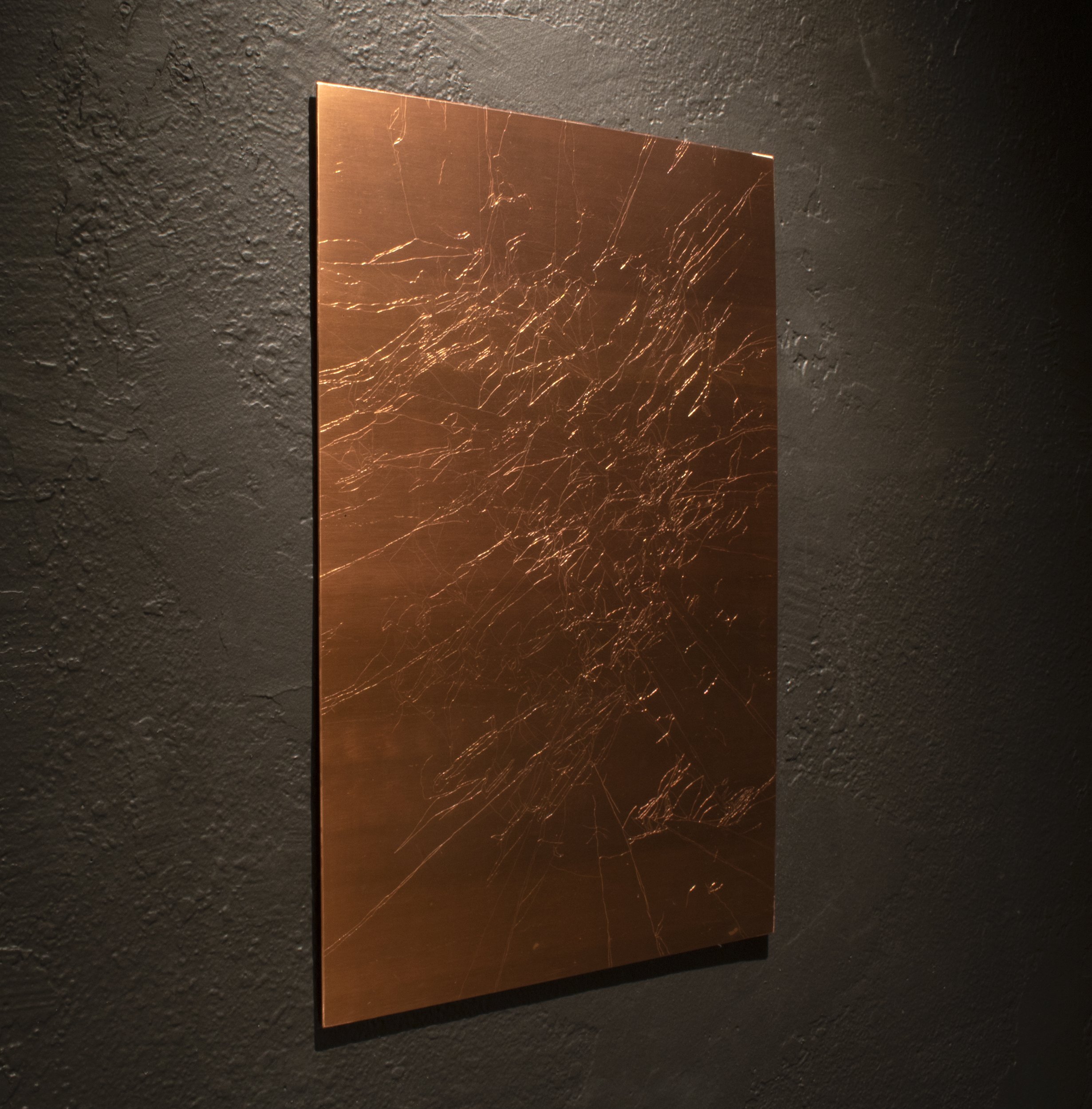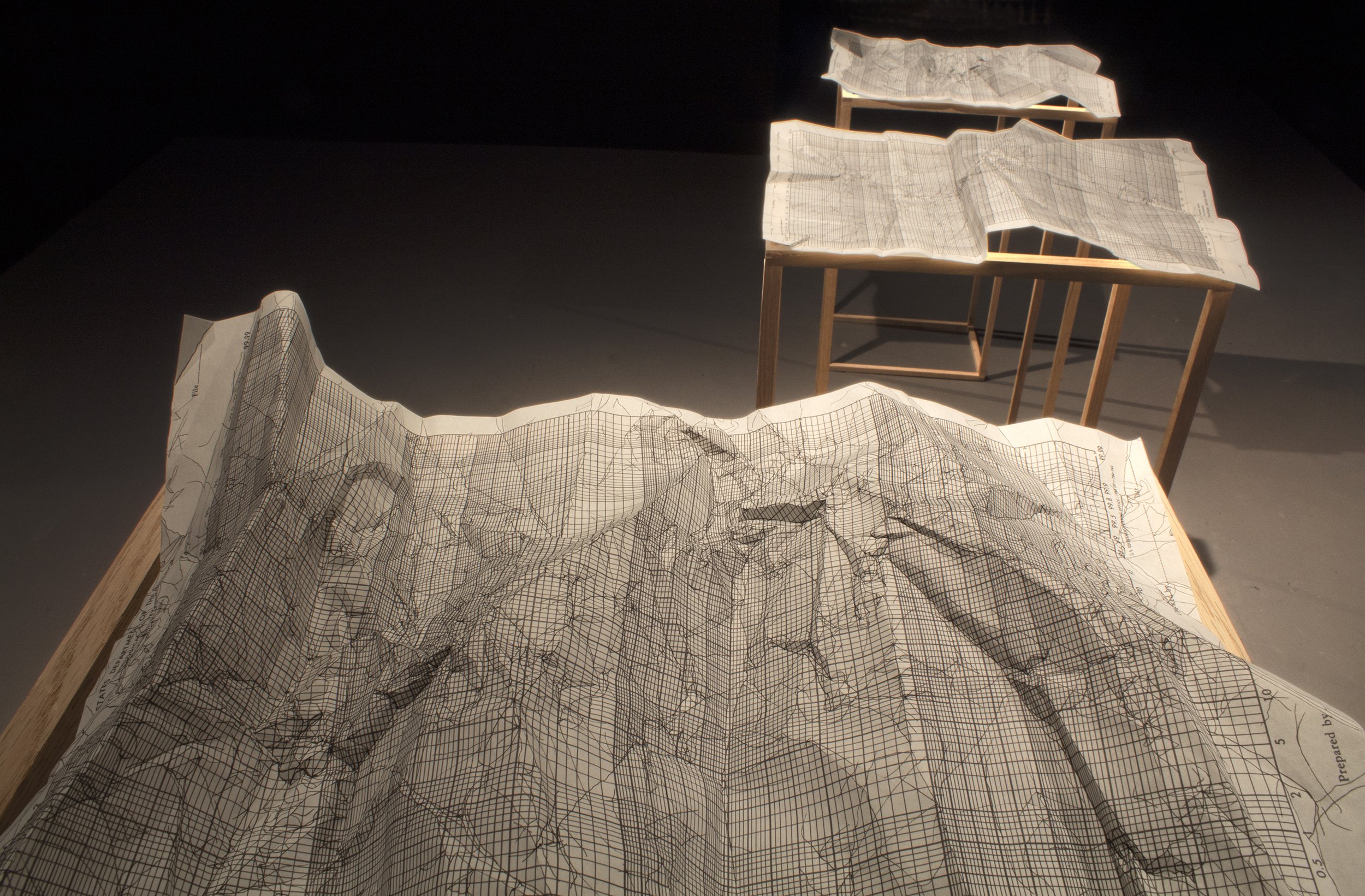geometric frustrations, 2022
Solo exhibition, east window SOUTH, Boulder, Colorado, USA, August 25–October 28, 2022
The exhibition revolves around a series of drawings on sheets of found log-log graph paper printed by the U.S. Department of the Interior Geological Survey Water Resources Division. The graph paper was likely used to record stream discharge data over a long period of time through a flow-duration curve. After rescuing the paper from the trash, Kassianidou crumples individual sheets, partially unfolds them, and then meticulously draws over every resulting mark.
According to applied physics research, creases form on crumpled paper in specific mathematical patterns, which allows the material to relieve any stress caused by the deformation.* The creases also protect the material from further damage; they enable the paper to retain its material integrity while adjusting to the modified space allotted to it through the reshaping.
The process of crumpling paper parallels the folding of Earth’s crust due to compression. When the constantly moving tectonic plates in the crust are pushed towards one another, the crust might bow upwards or downwards, causing the formation of mountains, volcanos, ocean trenches, or faults. The exact behavior depends on the geologic makeup of that section of crust.
The artist then creates maps of her drawings by engraving mirror images of the drawn lines on copper plates identical in size to the graph paper. This move from crumpled paper to copper, necessarily leads to image distortion. Copper has been used for engravings since the 1430s due to its softness. From the 1880s to the 1950s, the U.S. Geological Survey used copper engravings to reproduce topographic and geologic maps.
The crumpled paper in Kassianidou’s work hovers between surface, ground, recording tool, draft, drawing, map, material, refuse, and site. The work enacts a series of representations, translations, and material connections, creating networks from the smallest to the largest movements that frame our surroundings. The act of crumpling paper—usually indicating its destiny as trash—and recording its creases becomes a meditation on how we attempt to organize and represent space and place, how we make sense of our relationship to both, and what the implications of our corresponding choices each time might be.
The exhibition forms part of the Environmental Futures initiative at the University of Colorado Boulder with funding and support from The Andrew W. Mellon Foundation and NEST Studio for the Arts. Part of the work for the exhibition was completed during an artist residency at The Studios at MASS MoCA, funded through a TRANSIT grant from the Cyprus Deputy Ministry of Culture.
* Jovana Andrejevic, Lisa M. Lee, Shmuel M. Rubinstein, and Chris H. Rycroft, “A Model for the Fragmentation Kinetics of Crumpled Thin Sheets,” Nature Communications 12 (March 2021).
Works:
Wrinklegrams I–VII, 2022
Black archival pigment ink on found log-log graph paper
10.5 x 15.94 inches each
Stands, 2022
Red oak
Dimensions variable
*Stands fabricated by Cory Mckague
Mappings I–VII, 2022
Copper drawings (drypoint)
10.5 x 15.94 inches each



















